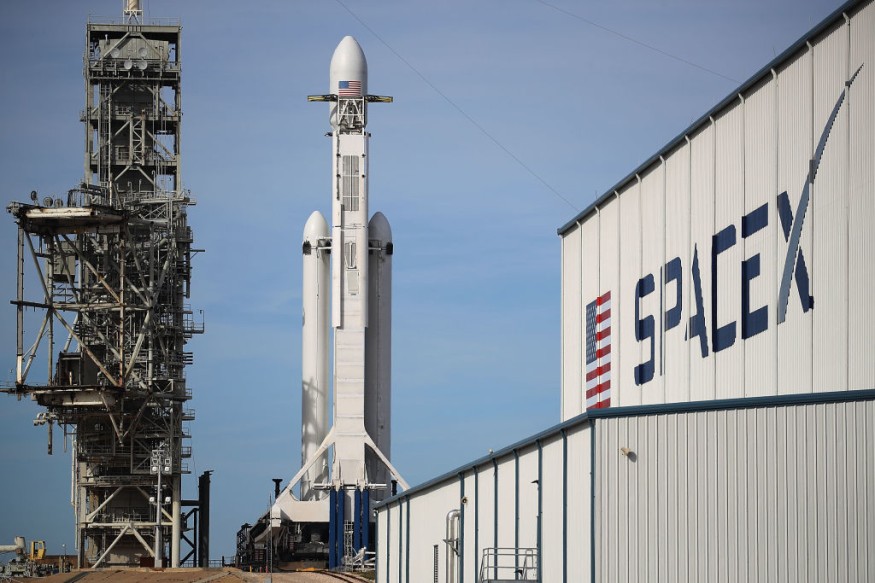SpaceX recently unveiled plans to produce radar-based wind models for its Boca Chica, Texas test facility. It submitted a filing to the Federal Communications Commission's (FCC) Office of Experimental Technologies (OET) last week. It stated that it intends to "Generate historical wind models at the Boca Chica Range" with the help of a third-party manufacturer's tropospheric radar wind profiler.

If the proposal is accepted, SpaceX would have overcome one of the most significant obstacles to ensuring a stable launch cadence for modern spaceflight. SpaceX will use the FBS-T (Full Beam Steering - Troposphere) tropospheric radar wind profiler from Colorado-based Radiometric Corp. to build wind models for Boca Chica.
According to sources, the profiler can detect wind movement at altitudes of up to 8 kilometers and operates in the 400Mhz - 500Mhz frequency range.
SpaceX Eyes Starship Tests By Using Boca Chica Wind Profiles
If approved by the FCC, the proposal would enable SpaceX to overcome one of the most significant obstacles to ensuring a stable launch cadence for modern-day spaceflight.
Owing to wind conditions at the launch and recovery sites, the Crew and Cargo flights to the International Space Station (ISS) for the National Aeronautics and Space Administration (NASA) are often rescheduled.
Both must be flawless for a crewed launch since the Dragon capsule has an emergency landing site in the event of a mission abort.
SpaceX said in its application that it uses the FBS-T (Full Beam Steering - Troposphere) tropospheric radar wind profile from Colorado-based Radiometric Corp. to build wind models for Boca Chica.
The filing asks the Commission to give SpaceX a two-year provisional license. It comes as the corporation prepares to put the Starship SN15 prototype through its paces in Texas. This would be the upper-stage rocket's fifth high-altitude test. The previous four yield a combination of victories and shortcomings.
SpaceX has made several improvements to the SN15 and its engines. Its CEO, Mr. Elon Musk, is optimistic that they will be enough to successfully recover a prototype in one piece after landing.
Read also: Elon Musk: SpaceX Starlink License Mod Gets FCC Approval as Falcon 9 Rockets Pushes Itself to Limits
Weather Restrictions That SpaceX Faces When Launching Rockets
As SpaceX prepares to deploy a rocket into space, they closely check the weather for days in advance to ensure that it does not interfere with the launch.
When it comes to launching rockets into orbit, the weather can be one of the most volatile variables. That's because launch dates are scheduled weeks or months in advance, often too far for meteorologists to correctly forecast precise conditions at the time of takeoff.
If the atmosphere is unpredictable somehow, SpaceX can delay the launch and wait before the conditions change. Most of the time, this means delaying the delivery for one to two days.
Here are three forms of weather that could force SpaceX to cancel its launch.
Thunderstorms, Lightning
Tornadoes and thunderstorms pose one of the greatest threats for rocket launches in Florida, particularly in the summer.
When a rocket is launched, it is shielded from lightning. Once it is in flight, though, it is unprotected.
NASA has criteria in place to ensure that a rocket is protected from thunderstorms from beginning to end.
The space agency had to make sure there are no thunderstorms or lightning strikes are detected within 10 nautical miles of the launch pad before the countdown is initiated.
The Apollo 12 rocket left the Earth's atmosphere moments before it was hit by lightning.
Moments after launch, lightning hit the rocket. The crew saw flashing lights, and the guidance system lost its altitude reference.
Fortunately, the devices were restarted quickly, and the rocket reached the moon. Had the strike not been ended, the mission may have been over early.
Clouds and rain
Even if it's not raining, a thunderstorm will delay the start. It's unusual for some kind of frozen snow to fall along the entire coast of Florida's northern panhandle.
Even if it is not raining, dense clouds might stop the launch.
Generally, flights through thin clouds or above are secure. However, freezing temperatures will harm the rocket.
Wind
And for a day with no rain or winds, there might always be a postponement.
If strong winds are detected above the ground or high up in the atmosphere, the launch is likely to be delayed.
Calculating wind speeds from the ground level is easy. The launch will be scrubbed if temperature observations are above or below 30 knots.
Determining whether the conditions at higher altitudes are right for launching is a different issue. The air force meteorologists study wind shear, not simply the strength of the wind.
If there is significant wind shear, the rocket would be at risk.
A launch was delayed to high wind shear in March. Elon Musk said on his Twitter account that the high shear boomed like a sledgehammer during supersonic ascent.
Pushing launch to Friday due to extreme high altitude wind shear. Hits like a sledgehammer when going up supersonic pic.twitter.com/Gr8T5upaLd
— Elon Musk (@elonmusk) March 1, 2016
And after a successful flight, the atmosphere will still be an issue for SpaceX when they attempt to land the first stage of their rocket in the Atlantic Ocean. These ships are small and hard to hit, making targeting them much more difficult, but conditions such as wind or waves add to the challenge.
Onboard view of landing in high winds pic.twitter.com/FedRzjYYyQ
— SpaceX (@SpaceX) April 9, 2016
However, on April 8, 2016, SpaceX successfully landed the first stage of their rocket on their submarine. This was the first of several landings on land.
RELATED ARTICLE : ULA Obtains Military Launch Contract Awards In Time of Billion-Dollar Military Satellite Arrival
Check out more news and information on SpaceX on Science Times.












